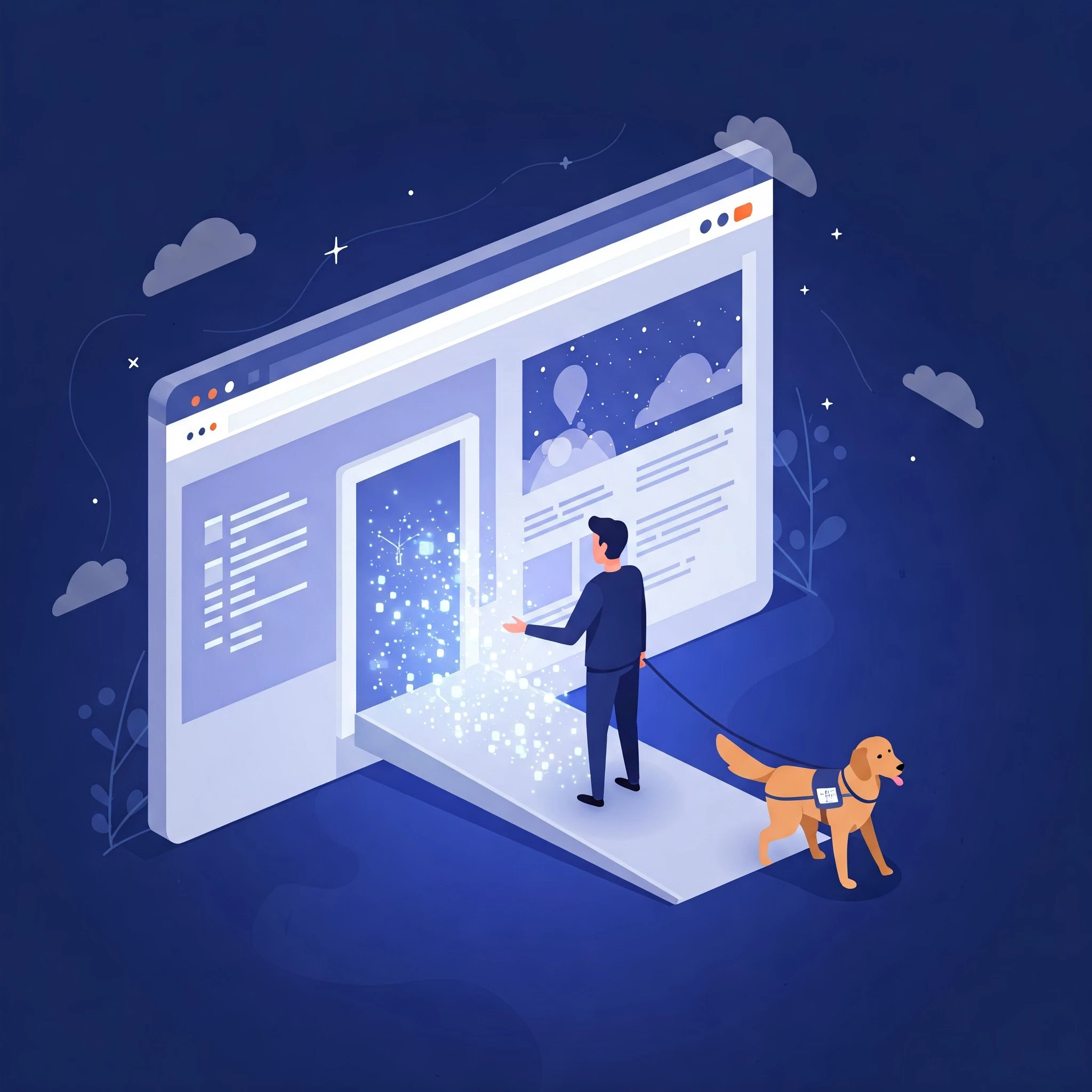- 1. The impact of inaccessible websites
- 2. Understanding WCAG: the foundation of web accessibility
- 3. The legal side: the Equality Act and your responsibilities
- 4. Taking the first steps towards web accessibility
- 5. Don’t delay: accessibility is essential
- 6. Need help?
- 7. Further reading about web accessibility
Imagine trying to read a book in a dimly lit room, or listening to a lecture where the speaker mumbles. Frustrating, right? Now, imagine that’s your experience every time you try to use the internet. That’s the reality for millions of people with disabilities who encounter inaccessible websites. Previously, we have discussed the compelling case for website accessibility. In this article, we look at web accessibility from the point of view of offering a simple starter guide to stop excluding visitors to your site.
In today’s digital world, your website is often the first point of contact for potential customers, supporters, or even just information seekers. But what if your website is unintentionally creating barriers? What if it’s accidentally excluding people? And what if you don’t have a clue that it’s happening?
The impact of inaccessible websites
Let’s put some faces to this issue. Think about:
- Someone using a screen reader:
They rely on text–to–speech software to navigate websites. If your images lack descriptive ALT text, or your content isn’t properly structured, they’ll miss out on crucial information; - Someone with motor impairments:
They might use a keyboard or voice commands to navigate. If your website isn’t designed for keyboard navigation, they’ll struggle to interact with it; - Someone with visual impairments:
They may need high contrast text or adjustable font sizes. If your website’s design ignores these needs, they may have difficulty reading your content; - Someone with cognitive disabilities: They may need clear, simple language and a consistent layout. If your website is cluttered or uses complex jargon, they’ll find it confusing; and,
- Someone with hearing impairments: They need captions on videos and transcripts for audio files. If your website lacks these, they’ll miss out on vital audio or video content.
These are just a few examples. The truth is, accessibility for disabilities affects a wide range of people, and neglecting it can have serious consequences.
Understanding WCAG: the foundation of web accessibility
So, how do you make your website accessible? That’s where web standards come in, specifically the Web Content Accessibility Guidelines (WCAG). Think of WCAG as a set of internationally recognised standards for making web content more accessible to people with disabilities.
WCAG is based on four core principles:
- Perceivable: Information and user interface components must be presentable to users in ways they can perceive;
- Operable: User interface components and navigation must be operable;
- Understandable: Information and the operation of the user interface must be understandable; and,
- Robust: Content must be robust enough that it can be interpreted reliably by different user agents, including assistive technologies.
In simpler terms, WCAG ensures that your website is easy to see, use, understand, and compatible with assistive technologies.
The legal side: the Equality Act and your responsibilities
The Equality Act, 2010 places a legal duty on businesses and organisations to make reasonable adjustments for people with disabilities. While this legislation covers the UK, other jurisdictions enacted similar legislation. For one thing, such legislation includes ensuring your website is accessible. Consequently, non–compliance might lead to legal action and damage to your reputation.
While the legal aspect might seem intimidating, it’s important to remember that accessibility is ultimately about inclusion and fairness. It’s about ensuring everyone has equal access to the information and services you provide.
Taking the first steps towards web accessibility
Making your website accessible doesn’t have to be overwhelming. Start by, for instance:
- Checking your website for ALT text on images;
- Ensuring your website can be navigated using only a keyboard;
- Using clear and concise language;
- Providing captions for videos; and,
- Making sure your website’s colour contrast is sufficient.
These small steps can make a big difference. Also, they will give you a positive start on the journey to web accessibility.
Don’t delay: accessibility is essential
Accessibility isn’t something you can put off until “later”. It’s an essential part of creating a user–friendly, inclusive online presence. By making your website accessible, you’re not only fulfilling your legal obligations but also expanding your reach and demonstrating your commitment to equality. And, in meeting accessibility standards like WCAG, you will give search engines a good reason to rank your site better than those competitors who haven’t caught up yet.
Want to learn more about the Equality Act and WCAG standards? Check out our detailed guides on the subject.
Need help?
If you’re unsure where to start or need expert guidance, Redcentaur is here to help. We specialise in making websites accessible and compliant. Contact us today for a consultation and let us help you create a website that everyone can enjoy.
Further reading about web accessibility
The compelling case for website accessibility
The benefits of an accessibility strategy





